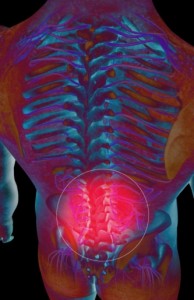 The Effects of a Spinal Cord Injury
The Effects of a Spinal Cord Injury
Am injury to the spinal cord is usually caused by a head, neck, or back injury that fractures or dislocates the vertebrate. Each year in the United States, more than 11,000 people suffer from a spinal cord injury, not including those who die at the scene of an accident. There are currently 250,000 people in the United States living with a spinal cord injury.
The spinal cord is the bundle of nerves that transmits information between the brain and the rest of the body. When a spinal cord injury occurs, this system is damaged, often resulting in physical impairment. Spinal cord injury usually starts with a sudden, traumatic blow to the spine that fractures or dislocates vertebrae. The impact causes the vertebrae to fracture or compress, which in turn crushes the extensive nerve cells (axons) that carry signals along the spinal cord between the brain and the body. Specific effects of a spinal cord injury on the body usually depend on the location and severity of the injury. An injury to the spinal cord can damage a small number of axons or almost all of them.
Spinal cord injuries are called either “complete” or “incomplete”.
- The victim of a complete injury totally lacks sensory and motor function below the injury.
- An incomplete spinal cord injury victim retains some sensory motor function below the injury.
Treating a Spinal Cord Injury
Tragically, many brain and spinal cord injures are irreversible. Automobile accidents cause the majority of spinal cord injuries, followed by sports mishaps, falls, birth trauma, violence and disease. In addition to draining the victim both physically and emotionally, SCI can also drain a family’s finances because medical care for spinal cord injuries is costly and long-term. Many people who live with spinal cord injury have secondary complications including pain, respiratory and heart problems, bladder and bowel dysfunction, pressure sores, respiratory complications, urinary tract infections, spasticity, and scoliosis.
Spinal Cord Injury & Paralysis
Quadriplegia and paraplegia are medical terms that indicate the type of paralysis suffered by those with a spinal cord injury. Paralysis, or loss of movement and sensation, can be complete or incomplete with a spinal cord injury. The complete/incomplete classification indicates how much movement and feeling is left in the affected areas after initial recovery. Less than one percent of those hospitalized with a spinal cord injury completely recover. The major of those with spinal cord injuries have incomplete quadriplegia, followed by complete paraplegia, complete quadriplegia, and incomplete paraplegia.
Caring for Someone with a Spinal Cord Injury
 Caring for those who have survived a spinal cord injury is often a life long endeavor. Treating a patient with a spinal cord injury often involves a team of medical professionals dedicated to every aspect of a patient’s well being. The injury can cause more than physical harm; it can impact the victims’ family, finances and future. Monetary compensation can help spinal cord injury victims and their families meet the challenges of the future with less worry about medical bills, employment and rehabilitation.
Caring for those who have survived a spinal cord injury is often a life long endeavor. Treating a patient with a spinal cord injury often involves a team of medical professionals dedicated to every aspect of a patient’s well being. The injury can cause more than physical harm; it can impact the victims’ family, finances and future. Monetary compensation can help spinal cord injury victims and their families meet the challenges of the future with less worry about medical bills, employment and rehabilitation.
What To Do After a Spinal Cord Injury
If you or a loved one has suffered a spinal cord injury because of another person’s negligent actions, it is important to consult with an attorney who understands this type of injury and is experienced in handling these sensitive cases.
Speak To New York’s Injury Attorneys
Contact the law firm of The Oshman Firm today at 1-800-400-8182, or contact us online for a free case evaluation. Our firm utilizes the contingency fee system, where we not only provide free consultations, but never charge a fee unless we are successful in obtaining a settlement or jury verdict on your behalf.
